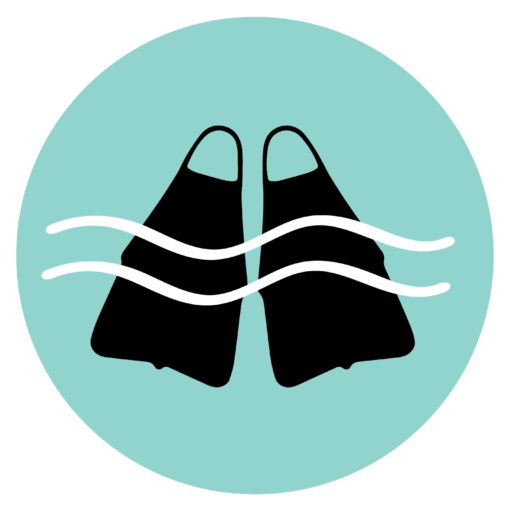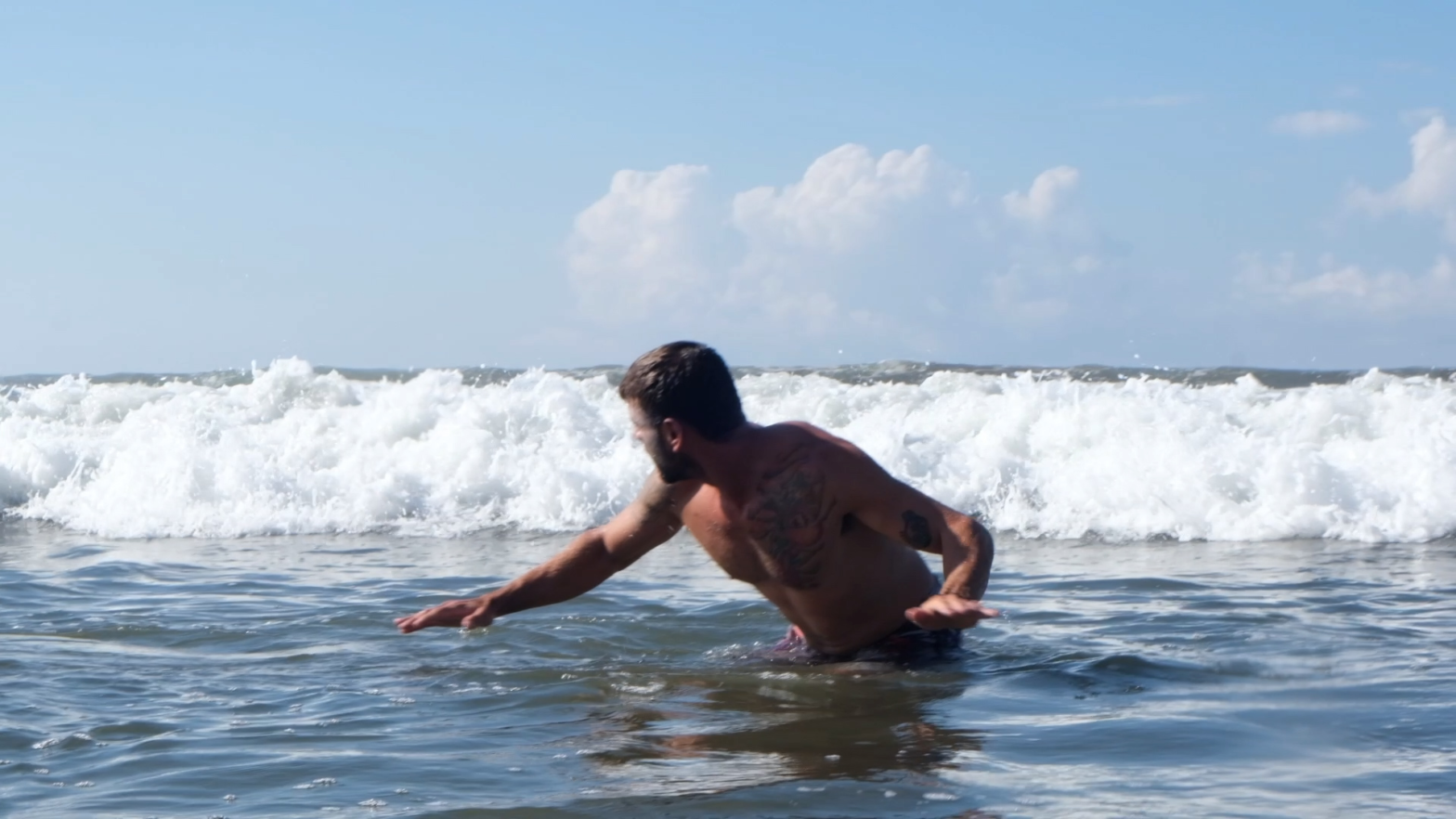One of the great things about bodysurfing is that we can always get better at it. Wave riding is a lifelong pursuit, and the better we are, the more fun we have.
Whether you are a beginner bodysurfer honing your technique in the white water, or an intermediate bodysurfer attempting to get barreled for the first time, here are four tips to help you level up.
1. Practice swimming in the ocean (or in a pool).
“To derive the most pleasure from riding large waves,” wrote Ron Drummond in The Art of Wave Riding, “an all around knowledge of swimming is essential. A powerful stroke, good endurance, and the absence of fear are the primary requisites.”
Swimming is a great way to improve your aerobic endurance and anaerobic threshold for bodysurfing. It’s a simple equation: the better you are at swimming, the more waves you will catch. Elite swimmers can become elite bodysurfers, but poor swimmers cannot.
Swimming is also an essential part of surviving in the ocean, especially when the waves are big and currents are strong.
I often see beachgoers swimming frantically when trying to bodysurf. But the key to catching any wave is to swim efficiently with good technique, and the best way to improve your swimming technique is with deliberate practice.
When I was training to become an ocean lifeguard for the City of San Diego, I joined an open water swimming group called One With The Ocean.
After training with this group for several months, I noticed a dramatic improvement in my swimming ability and conditioning. Not only did my swim technique improve, but I was also able to swim for longer intervals without getting tired.
These hour-long group swim sessions include many different forms of exercise, such as running, long-distance swimming, sprint-swimming, and even bodysurfing—all great methods to improve your fitness.
But if you can’t find the time to join an open water swimming group, pool training is a great alternative. Here is a helpful swim training video to get you started in the pool.
2. Train your breath-hold.
“The key to optimum breathing and all the health, endurance, and longevity benefits that come with it,” says James Nestor, author of Breath, “is to practice fewer inhales and exhales in a smaller volume. To breathe, but to breathe less.”
The longer you are able to hold your breath, the more confidence you will have bodysurfing big waves. Big waves often result in long underwater hold downs, so it helps to have a high lung capacity in these situations.
For someone who lacks confidence in the ocean, breathing efficiently is the best way to stay calm in potentially scary or dangerous conditions. You can survive most situations in the ocean by simply conserving your energy and not panicking.
Panicking elevates your heart rate, burns oxygen, reduces buoyancy, and causes you to make bad decisions. Breathing deep and rhythmically keeps you calm and oxygenated so you can make the right decision when your life depends on it.
Not only is breathwork great for bodysurfing, but it can also improve your mood, reduce anxiety, promote better immunity, and decrease physical stress.
To learn more about the benefits of proper breathing and breath-holding, check out James Nestor’s books Breath: The New Science of a Lost Art and DEEP: Freediving, Renegade Science, and What The Ocean Tells Us about Ourselves.
If you have access to a pool, make sure to incorporate in-water breathwork to your exercise regimen for the best results. Why? Because of something called the Master Switch of Life—a variety of physiological reflexes in the brain, lungs, and heart, among other organs, that are triggered the second we put our faces in water.
My favorite resource for breath retention training in the pool is Extreme Performance Training (XPT), founded by professional athletes Laird Hamilton and Gabby Reece. Learn more about XPT pool training here.
Additionally, one of my favorite ways to train my breath-hold in the ocean is by bodysurfing waves in the streamline position with my face underwater.
This technique is fun, simple, and effective. Plus, it doesn’t feel like training. All you have to do is catch a wave and ride it as far as you can without taking a breath!
3. Take up yoga and/or the martial arts.
Bodysurfing is essentially ocean-based yoga. Don’t believe me? Just check out this video:
Any experienced bodysurfer will recognize the importance of applying the following four foundational yoga techniques when riding a wave:
- Asana—mastery of body posture
- Mudra—mastery of hand position
- Pranayama—mastery of breath control
- Dhyan—mastery of concentration
These foundational skills, also found in the martial arts, are highly transferable to bodysurfing. “There’s a thing in karate called the kiai,” says legendary bodysurfer Mark Cunningham, “where your body is focused and centered and ready for anything. Same with bodysurfing. You’re constantly making changes to your stiffness and flex to adjust to the ever-changing wave.”
Yoga and martial arts help us master our breath and body positioning on land so we can perform better when we’re in the ocean. Take Joel Tudor, for example, a world champion longboarder who is also a black belt in Brazilian jiu-jitsu. Tudor’s martial arts training improved his coordination, flexibility, and focus, which clearly benefited his surfing too. In fact, Tudor recently won a world longboarding title at age 45, making him the oldest world champ ever.
So if you want to level up your bodysurfing ability, make sure to get some land-based training in as well.
4. Consume bodysurf media.
It’s not just your physical body that needs training but also your mind. The more you watch and consume bodysurf media, the easier it is for you to visualize and learn new styles and techniques. Build some context around the activity: read books and articles, watch films and YouTube videos.
Watch the greats to refine your technique. I’m a big fan of Dave Rastovich (Australia), Belinda Baggs (Australia), Mark Cunningham (Hawaii) , Mike Stewart (Hawaii), and Mark Drewelow (California).
Some up-and-coming bodysurfers have also caught my attention recently. Make sure to watch Keali’i Punley (Hawaii), Kalani Lattanzi (Brazil), and Corey Sainsbury (Australia).
Lastly, check out our YouTube channel for awesome bodysurfing content!


